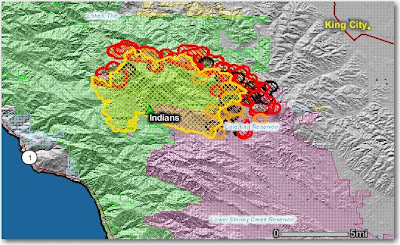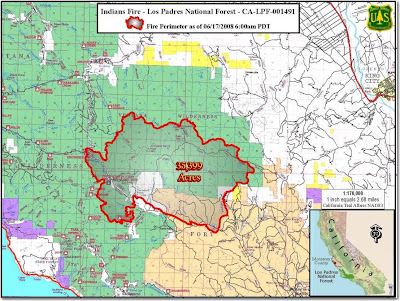The most recent posts will be at the top. All times are Mountain Time. Hit Refresh to get the latest updates.
(The hearing is over now. All three representatives from the on-the-ground organizations did an excellent job. They mostly prepared good written testimony which they read, and responded eloquently to the questions the Senators asked. I am proud of them.)
1:31; Sen. Craig asked Miley about the use of private engines on fires. Miley talked about the difficulty of getting regions outside of Washington and Oregon to accept contract engines. Then the hearing ended.
1:25; Questions from the Senators begin. Thatcher was asked about federal firefighters leaving for better paying jobs in other agencies. Judd said that firefighters feel that “the agency does not give a damn about me” and that the fed. agencies do not care about the employees. Judd was asked about “poor morale”. Judd said study groups have made recommendations about how to fix the retention problems, but the agencies have not taken action as needed. He said the management of the fire program by people with no fire experience is as much of a problem as pay and benefits.
1:20; Debra Miley talked about the role of private contractors. She said the agencies save money by using them. Her organization has access to 10,000 firefighters along with 5,000 “support” personnel. Seems like really high numbers. She spent more time talking about her organization. And more time.
1:11; Casey Judd was next. He began by listing activities his organization has been involved in. He mentioned the “systematic dismantling of the fire program” in the Forest Service, inequitable pay, outdated classification standards, retention problems, that leadership does not have fire experience, and that some fire funds are siphoned off before they hit the ground.
1:08; Thatcher spoke about the retention problem within the fire agencies and that college degrees are now necessary for some fire management positions. He said that experience and competence are more important than degrees.
1:05; The second panel begins. Each of the witnesses was asked to make a brief 5-minute summary of their testimony.
- Ron Thatcher, National Federation of Federal Employees (FFFE)
- Debra Miley, Federal Wildland Fire Service Association (FWFSA),
- Casey Judd, National Wildfire Suppression Association (NWSA)
1:02; Senator John Barrasso R-WY was concerned about damage by bark beetles. Rey said lodgepole pines have a 100-year burn cycle (it’s actually 300+ years) and that yes, the insect-killed trees will increase the intensity of fire. Barrasso asked about salvage sales, and Rey said yes, that’s a possiblity.
12:55; Senator Ron Wyden D-OR said that he thinks the high cost of fuel is hurting firefighting efforts and that the agencies need to consider how to deal with this issue.
12:50: Senator Larry Craig R-ID, said that firefighters “don’t need Masters degrees” to fight fire, and thanked Rey for solving this issue. And “can’t we borrow Arnold’s big airplane (DC-10)” (seriously). Craig asked if DC-10’s and 747’s are effective. Rey said they can be effective in some situations.
12:45; Senator Ken Salazar D-CO, said “What is green in a climax environment eventually turns brown and dies”, referring to fuel buildup concerns.
12:38; Domenici says we should manage the forest better “by way of clean up” so there are fewer fires. Rey said “you don’t cure a problem that was 100 years in the making in one or two years’ time” and that there is a lot of fuel treatment going on. He told the story again about the question on the TV show Jeopardy: “What disaster in November, 2003 could have been avoided by cutting trees?”. He said all three contestants turned over their boards and all had a variation of something about a wildland fire. The “correct” answer was a widespread power blackout. Rey, the former timber company lobbyist, tells this story in every hearing; his point being that fuel treatment (and especially cutting trees?) is gaining entry to the public consciousness.
12:31; Senator Domenici R-NM, is up now. He’s rambling about collecting mushrooms in the forest. On and on about mushrooms. Still more about mushrooms. I thought this hearing was about fire. (Side note. In 2006 there were reports that Domenici was wandering the halls of the Senate office building wearing what looked like pajamas.)
12:26; Rey was asked about the large number of unfilled orders for resources on fires. Rey said that is normal for Preparedess Level 5 and that we would have to double the budget to fix that problem.
12:24; just got the streaming video working, after finding that the CapitolHearings.org link did not work. See the earlier post below for the updated link. Mark Rey just finished reading his testimony. Senators are asking him questions now.


